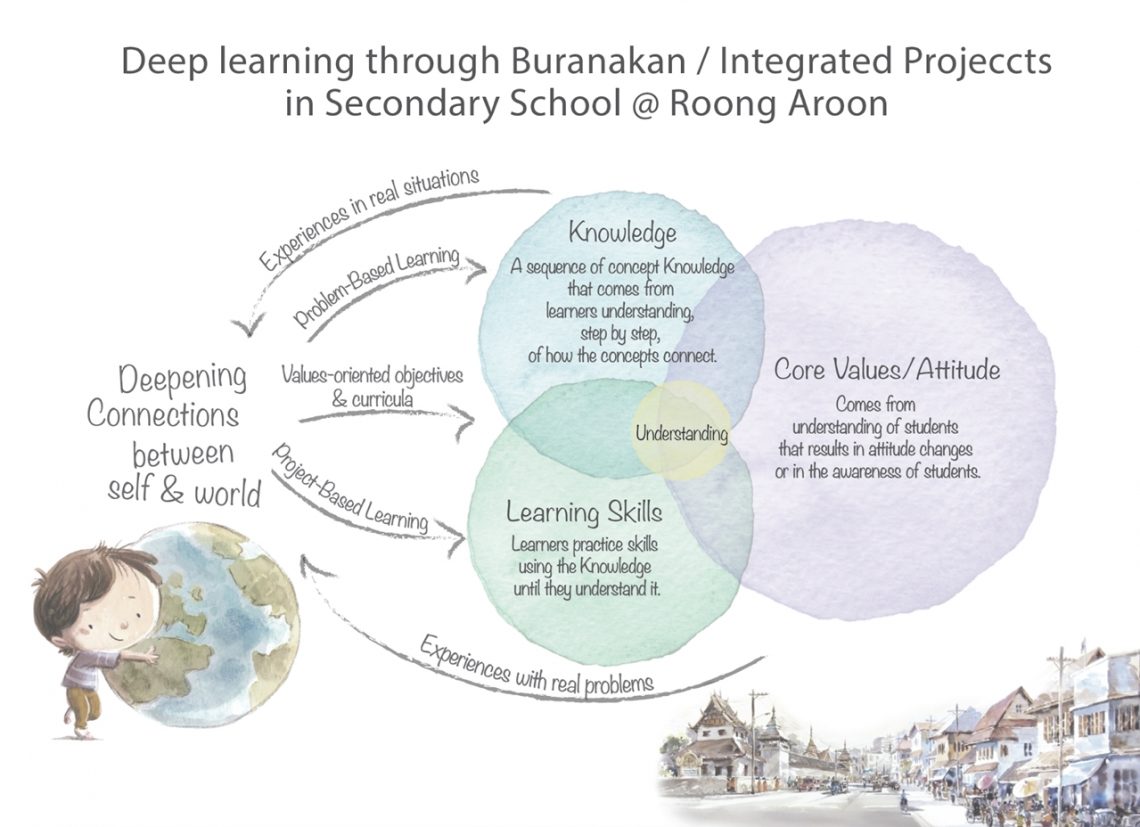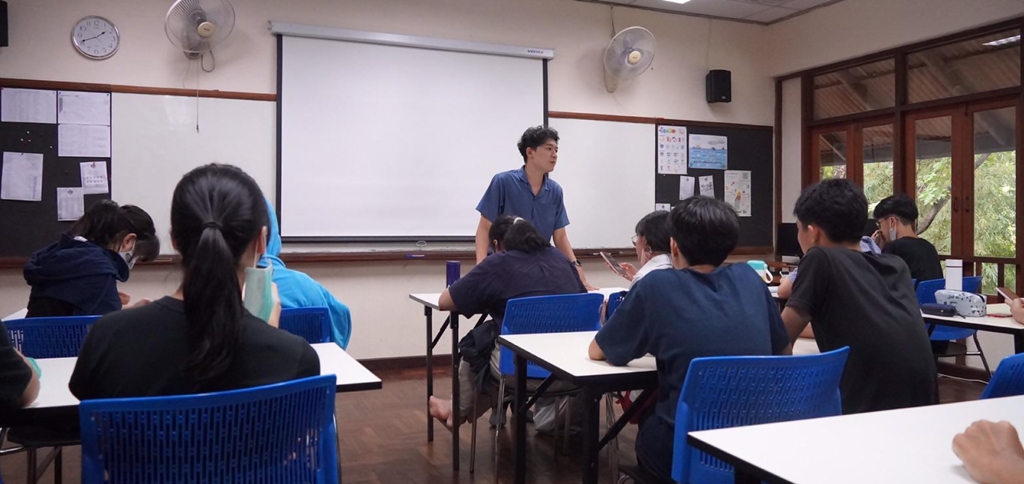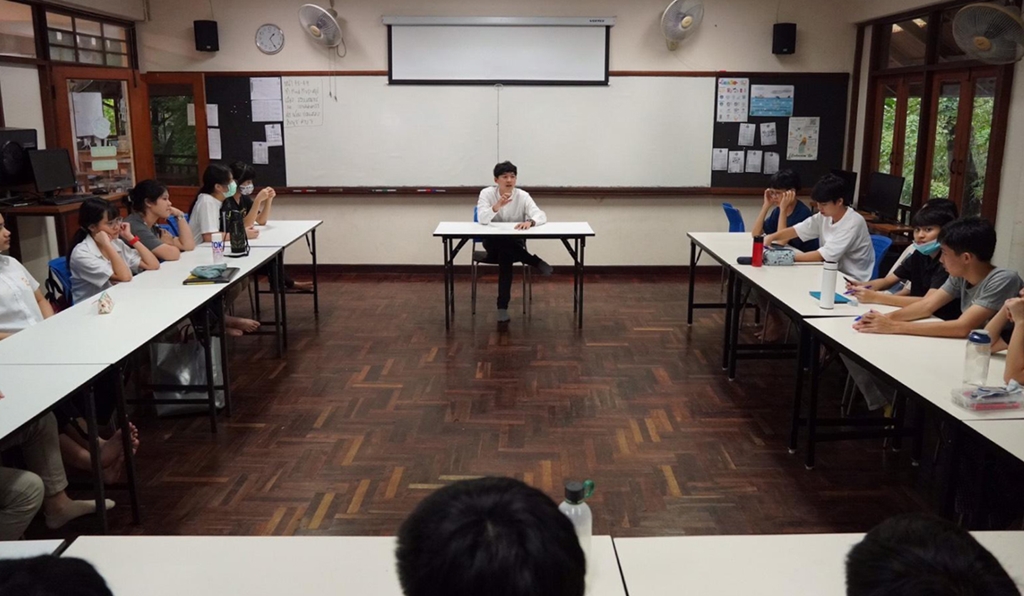
Buranakan in Grade 9: Deep Learning through Integrated Project Work
What do students learn from Buranakan?
In both lower and upper secondary school, Roong Aroon students learn in relationship with teachers whom they trust. With a teacher’s guidance, they learn about how different categories of knowledge fit together, relate to and influence each other, and connect with themselves. As students look for ways to share what they’ve learned with their community, the learning process elicits a deepening of values and attitudes about that which is being studied. The sharing process helps them develop their skills, as well as their values as they continue to internalize the knowledge about what they are learning.
Students learn knowledge, skills, and attitudes every term, but it’s not isolated facts or skills that are most important for learning within Buranakan. Essential to their learning process is choosing topics that students see as grounded in their own lives. As knowledge deepens, a motivation expands to keep learning more about elements of the systems they are studying, which students come to realize is not separate from their own lives. As one student explained, “the learning process allows students to be more understanding about the topic.The topics we are learning are in our life so they can impact our feelings.” Thus, the value (meaning), the feelings, and the closeness of the topic to their own lives are considered vital to the learning process.
Challenges of Facilitating Buranakan
As we explored the case of Teacher Mod working with Grade 9 students, the facilitation of Buranakan sometimes looked easy. However, teachers need to overcome a variety of challenges to engage students in deep learning about the real-world problems they are exploring. According to Cru Pu who has worked for about two decades as a Buranakan teacher and who mentors secondary school teachers, Buranakan teachers must develop:
- An openness and adaptability beyond their own field, a love of inquiry, exchanging ideas with students. Teachers need to learn new things, and continually teach themselves in relation to their society.
- An understanding of students: Each teacher should be a person who students see as trustworthy, who they can depend on for advice, openness for listening to their concerns, while knowing how to help students to focus on content or societal issues that are the lesson plans.
- A capacity for organizing, categorizing information from a wide variety of primary and secondary sources for learning with students about complex problems. Buranakan teachers learn to see widely so that when students come up with ideas outside of the learning objectives, the teachers can bring them back from their starting point to realize what they’re missing.
Challenges of Facilitating Buranakan
As we explored the case of Teacher Mod working with Grade 9 students, the facilitation of Buranakan sometimes looked easy. However, teachers need to overcome a variety of challenges to engage students in deep learning about the real-world problems they are exploring. According to Cru Pu who has worked for about two decades as a Buranakan teacher and who mentors secondary school teachers, Buranakan teachers must develop:
- An openness and adaptability beyond their own field, a love of inquiry, exchanging ideas with students. Teachers need to learn new things, and continually teach themselves in relation to their society.
- An understanding of students: Each teacher should be a person who students see as trustworthy, who they can depend on for advice, openness for listening to their concerns, while knowing how to help students to focus on content or societal issues that are the lesson plans.
A capacity for organizing, categorizing information from a wide variety of primary and secondary sources for learning with students about complex problems. Buranakan teachers learn to see widely so that when students come up with ideas outside of the learning objectives, the teachers can bring them back from their starting point to realize what they’re missing.


One of the Roong Aroon School directors, Sakunee Boonyabancha (Cru Jiew is her Thai nickname) has also worked closely with Buranakan teachers for over two decades. According to Cru Jiew, another big challenge is that teachers must be willing and able to change their own thoughts and behaviors. For example, connected with the Grade 9 curricula, many factors contribute to regional problems with ocean waste and other environmental changes that involve both human factors as well as natural factors. Teachers must develop an awareness of these interlinked factors along with a capacity for seeing their own impacts too. When they really understand and see their own impact, their behaviors will change as well. So, before they can teach any systemic Buranakan topic well, the teachers must understand deeply and see its value in tandem with their own responsibility, of how their own actions matter to the larger system.
On a related note, teachers must learn to design activities so that their students can feel what the teacher felt. This is important because teachers must learn to use their own learning experiences for guiding students, to understand the learning process. This allows them to set the appropriate tone and necessary target objectives for guiding students to find the value of each lesson, to help students reflect on the connections between their experiences and their learning.

